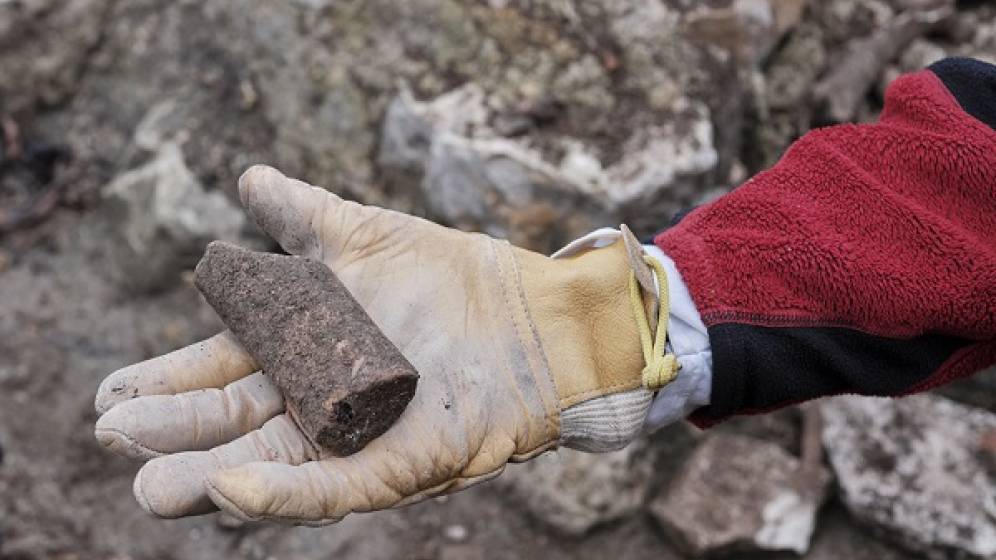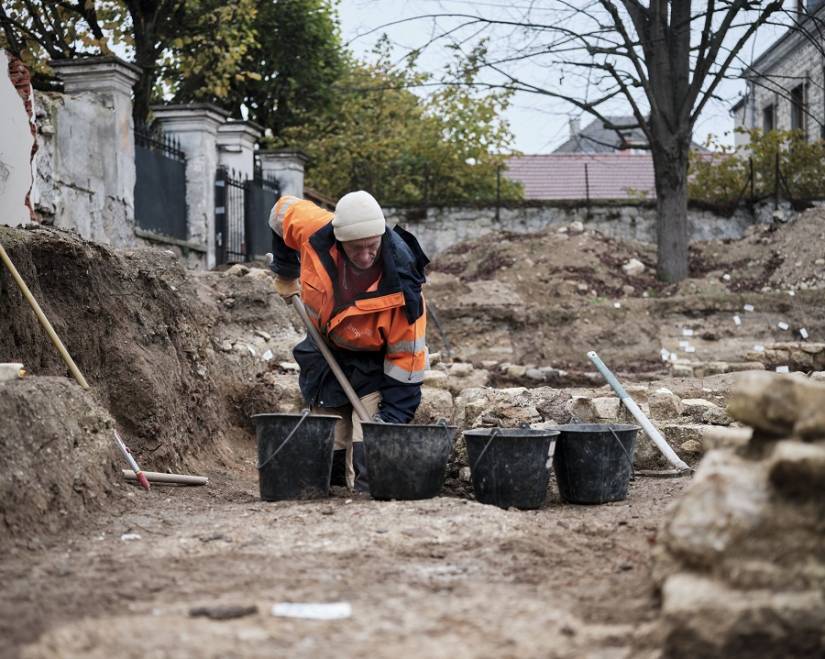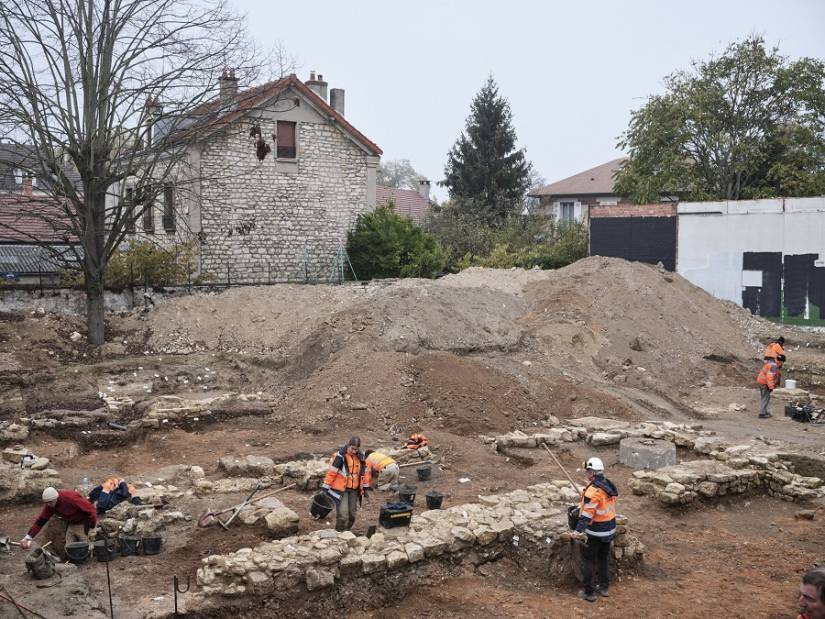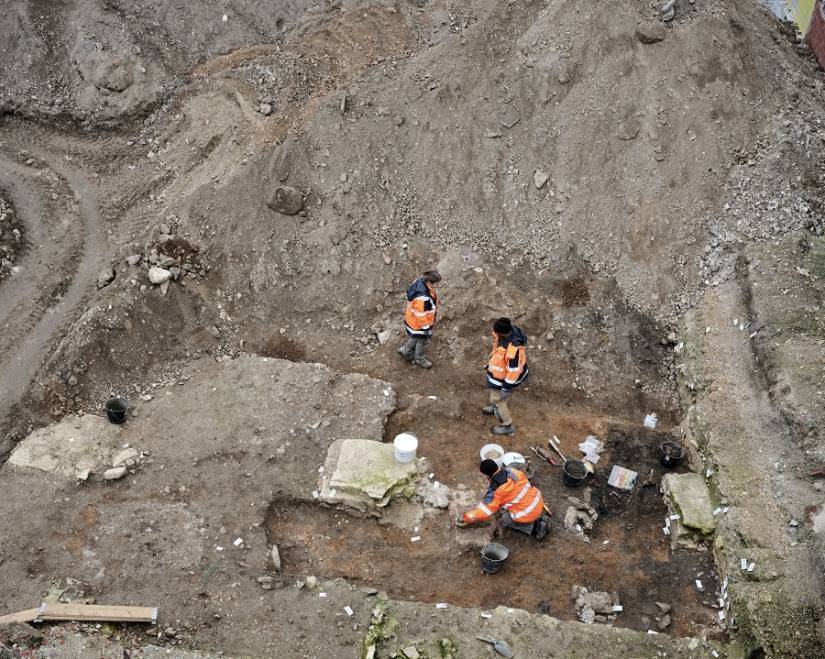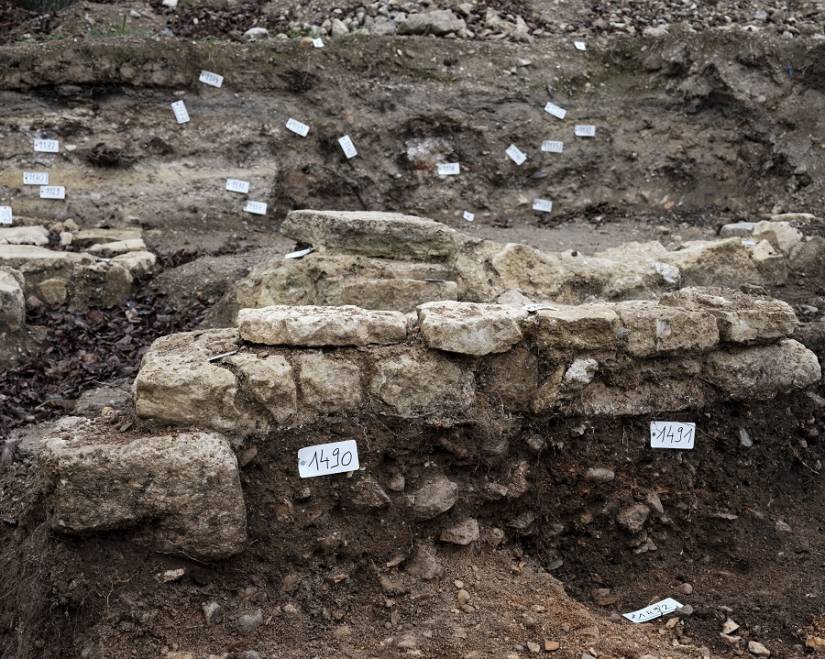Le monastère médiéval et le château de la Renaissance
La fondation au milieu du VIIe siècle d’un monastère est à l’origine de la ville actuelle. L’État du site au haut Moyen Âge est mal connu mais il s’agit à l’évidence d’un domaine ecclésiastique important qui est très fortement altéré par la Guerre de Cent Ans. La plupart des bâtiments monastiques est démoli en 1751. Il en reste quelques vestiges aujourd’hui. À proximité des lieux monastiques Philibert Delorme fait construire à partir de 1541 un logis pour le Cardinal du Bellay, évêque de Paris et conseiller du roi. Agrandi par Catherine de Médicis, le château est racheté en 1598 par le prince de Condé. Il est détruit en 1796.
Recherches proche de l’ancien château à Saint-Maur-des-Fossés © Myr Muratet, Inrap
À la recherche des écuries du château
La parcelle étudiée par les archéologues correspond à la capitainerie qui était à la Renaissance l’intendance du château de Saint-Maur. Il s’agit d’un ensemble construit, organisé autour d’un gros bâtiment central qui apparaît au XVIIIe siècle dans les archives de la Révolution Française ; il est alors utilisé comme écurie par l’école vétérinaire de Maisons-Alfort.
Recherches proche de l’ancien château à Saint-Maur-des-Fossés © Myr Muratet, Inrap
Une grange du moyen âge
La fouille montre qu’il s’agit en réalité d’une grange dîmière installée par l’abbaye de Saint-Maur pour y stocker le produit de l’impôt en nature sur les récoltes. On sait grâce aux archives que cette grange jusque-là non repérée, existe au XVIe siècle. Son édification date vraisemblablement du bas Moyen-Âge. L’état de conservation assez bon des vestiges permet d’espérer comprendre le fonctionnement interne du bâtiment.
Recherches proche de l’ancien château à Saint-Maur-des-Fossés © Myr Muratet, Inrap
Recherches proche de l’ancien château à Saint-Maur-des-Fossés © Myr Muratet, Inrap
Avant la construction de la grange, le lieu était densément occupé depuis le début du Moyen Age. On en trouve de nombreuses traces sous la forme de trous de poteau, fosses et fossé qui suggèrent la proximité du premier village aux abords de l’abbaye.
Recherches proche de l’ancien château à Saint-Maur-des-Fossés © Myr Muratet, Inrap
- Contrôle scientifique Service régional de l’archéologie (Drac Île-de-France) - Recherche archéologique Inrap et CD 94 - Responsable de recherches archéologiques (RRA) : Jean-Louis Bernard (Inrap) - Responsable de secteur, adjointe au RRA : Élise Allaoua (CD 94) |
L’Institut national de recherches archéologiques préventives (INRAP) est un établissement public placé sous la tutelle des ministères de la Culture et de la Recherche. Il assure la détection et l’étude du patrimoine archéologique en amont des travaux d’aménagement du territoire et réalise chaque année quelque 1800 diagnostics archéologiques et plus de 200 fouilles pour le compte des aménageurs privés et publics, en France métropolitaine et outre-mer. Ses missions s’étendent à l’analyse et à l’interprétation scientifiques des données de fouille ainsi qu’à la diffusion de la connaissance archéologique. Ses 2 200 agents, répartis dans 8 directions régionales et interrégionales, 42 centres de recherche et un siège à Paris, en font le plus grand opérateur de recherche archéologique européen.
Situé à Villejuif, le service Archéologie est un service du Département du Val-de-Marne créé en 1978. Constitué d’une vingtaine d’agents, ses missions consistent à mettre au jour, préserver et étudier le patrimoine archéologique de son territoire, à en conserver les témoignages et à en transmettre la connaissance. Il participe à la recherche archéologique au sens large. Le Conseil départemental marque ainsi sa volonté de protéger le patrimoine archéologique du Val-de-Marne.
Partager la page
